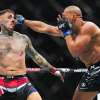
He moved up two rungs in weight, spent a year out of the ring, and came back as if no time had passed. The 'professor' of modern boxing, Terence Crawford, debuted at super middleweight (up to 76.2 kg) and pulled Canelo Álvarez off the pedestal — not with a sudden burst, but with systematic, calculated work on every meter of the ring. Let’s break down how it happened, what Crawford did round by round, and why even the judges had no chance to doubt it.
Leaping the Weight Class: Post-Layoff Form and Adaptation
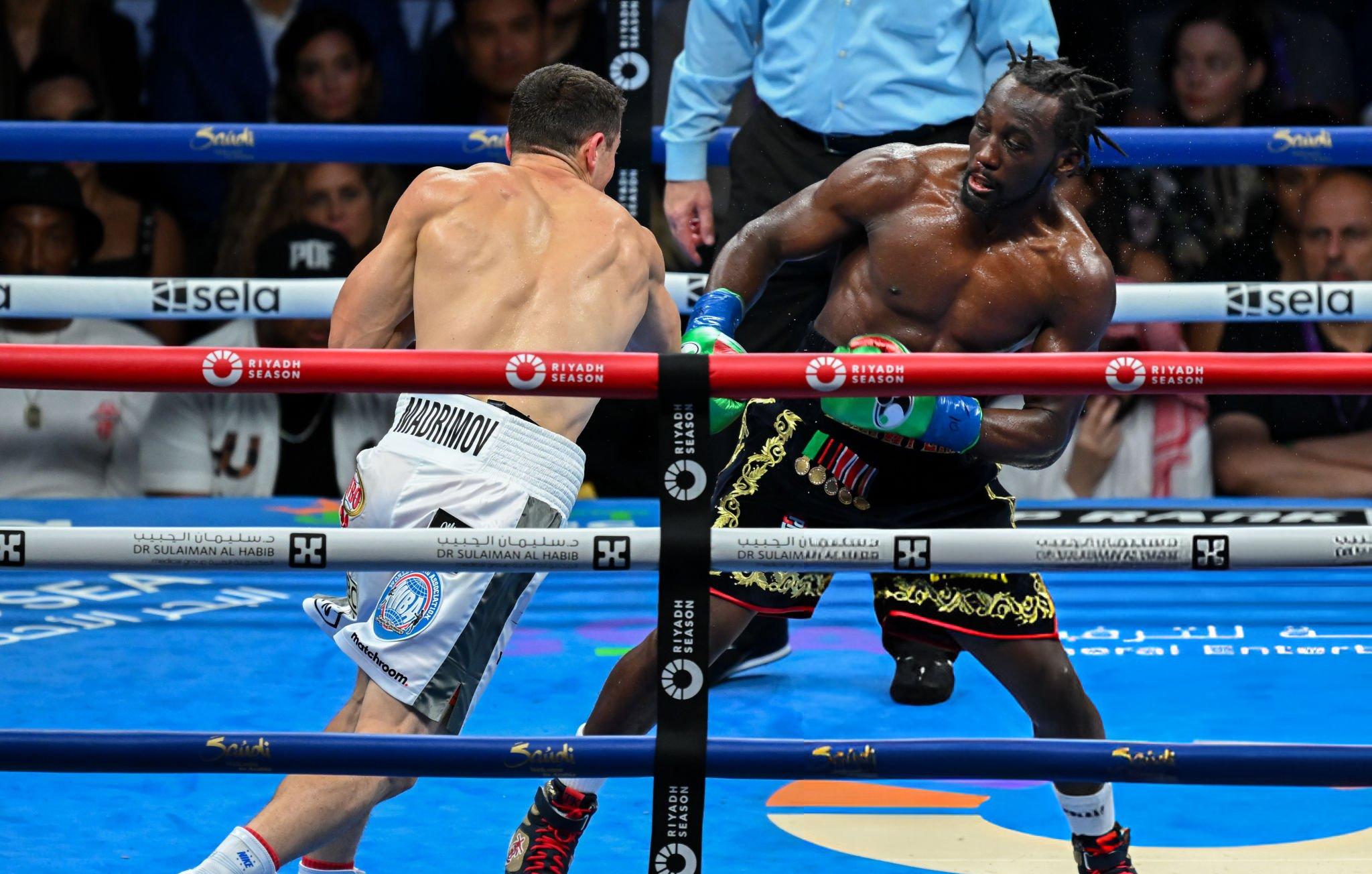
Just a year ago, Crawford tested light middleweight (up to 69.9 kg) in a bout with Israil Madrimov — a tough outing that winked at the skeptics: 'Will the physicality be enough higher up?' The second step — straight into 76.2 (super middle) — looked risky: the opponent’s mass, dynamics alien to the body, and no ramp-up through intermediate fights. This is where champion-level discipline showed: control of footwork, an economical style, a clear plan for distance — all of it made up for the 'shortfall' in adaptation rounds.
Who Took the Opening: Scouting at the Price of Points
As usual, Crawford didn’t force the start. He ceded the center, absorbed accentuated single shots on the guard, and conceded two of the first three rounds on the cards. In return he bought the essentials — the rhythm of the fight and an understanding of Canelo’s trajectories. The reconnaissance didn’t slide into panic: speed of thought covered the statistical dip, and a defense built on distance selection let him flip the script from the fourth–fifth rounds.
Speed and Rhythm: 'Not the Fastest' Doesn’t Mean Slow
Yes, especially in the first half there were moments when Álvarez bounced out after counters. But explosive speed has never been Crawford’s main tool. His strength is rhythm control: deceptive pauses, micro-shifts, breaking the tempo, and counters through the opening. As once with Yuriorkis Gamboa or Thomas Dulorme, he doesn’t race in a sprint; he changes the lights — red during the opponent’s attack and green for his own counters.
Did Crawford Absorb Canelo’s Power: A Crash Test to Body and Head
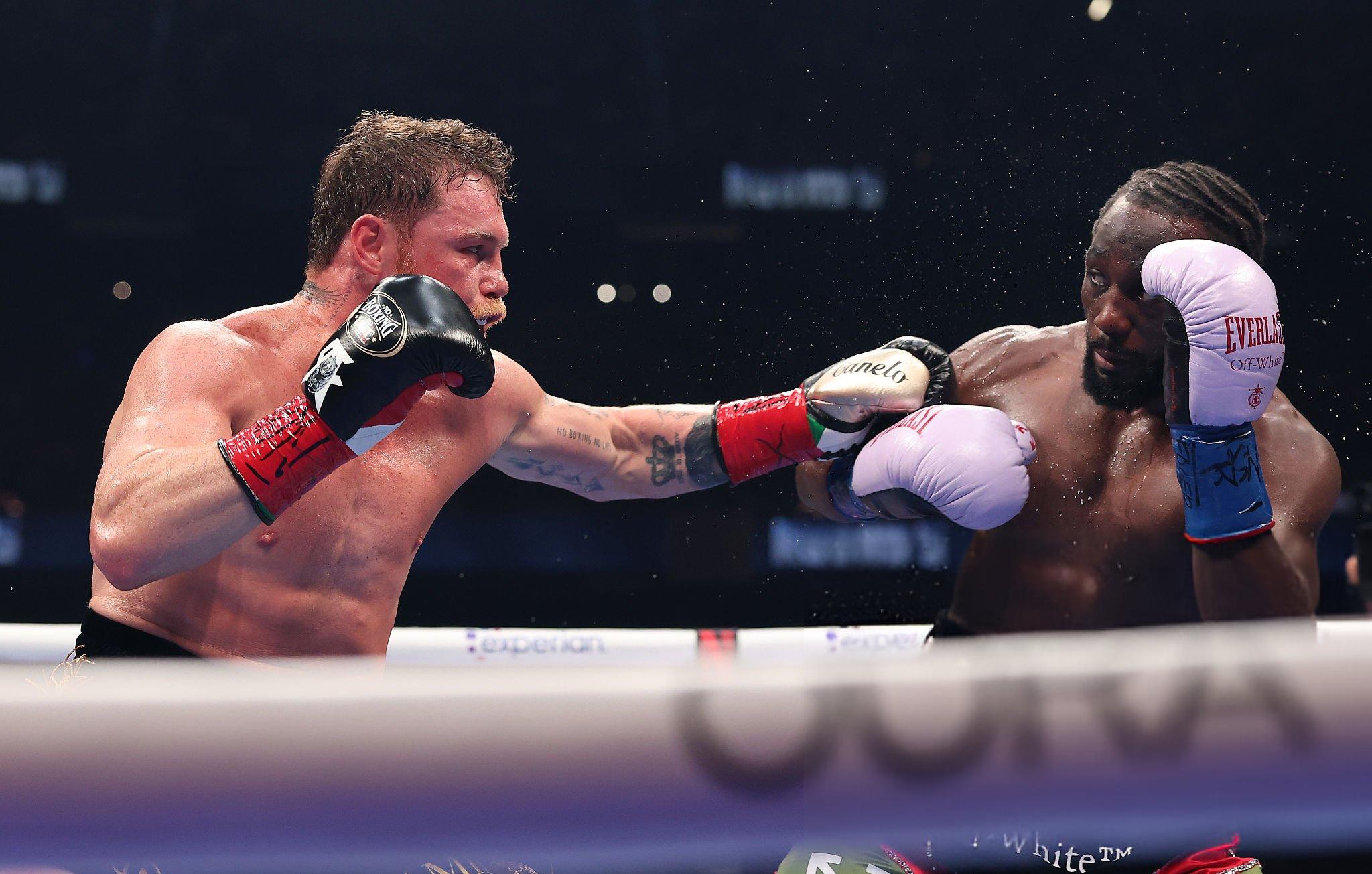
He passed without cracks. Body-shot flurries, single shots on the guard, pressing with physical pressure — Crawford lived through all of it without visible sway. Over 12 rounds there was neither wobble nor 'got buzzed': the expenditure was there, but no signs of diminished durability. The density of the guard and a smart distribution of defensive priorities (which zone to cover, where to move the head) took away the level of damage Canelo is used to inflicting.
Did Terence’s Power Suffice to Slow Canelo’s Pressure
Partly. The counters snapped Álvarez’s head back on the replays, and in the dying seconds of the 12th Crawford’s left hook shook Canelo. At the same time, the knockout Crawford spoke about was a heavy lift from the start: even a natural puncher like Gennadiy Golovkin never visibly rocked Canelo, while Crawford is a 'playmaker' type; he usually finishes elite opponents late, not early — especially not in a new weight. Still, it generated enough respect to dampen the pressure and preserve command of the distance.
Ropes? No, Thanks: How Crawford Avoided the Trap on the Ropes
The key distinction from many of Canelo’s opponents was the refusal to park on the ropes. He could yield the center but wouldn’t let himself be pinned — something seen at times even with Dmitry Bivol. One or two touches on the ropes — and an immediate exit at an angle. In such episodes the judging optics often favor the aggressor; Crawford simply didn’t let those points accumulate.
Four Pillars of the Plan: Footwork, the Jab, Angles, Discipline
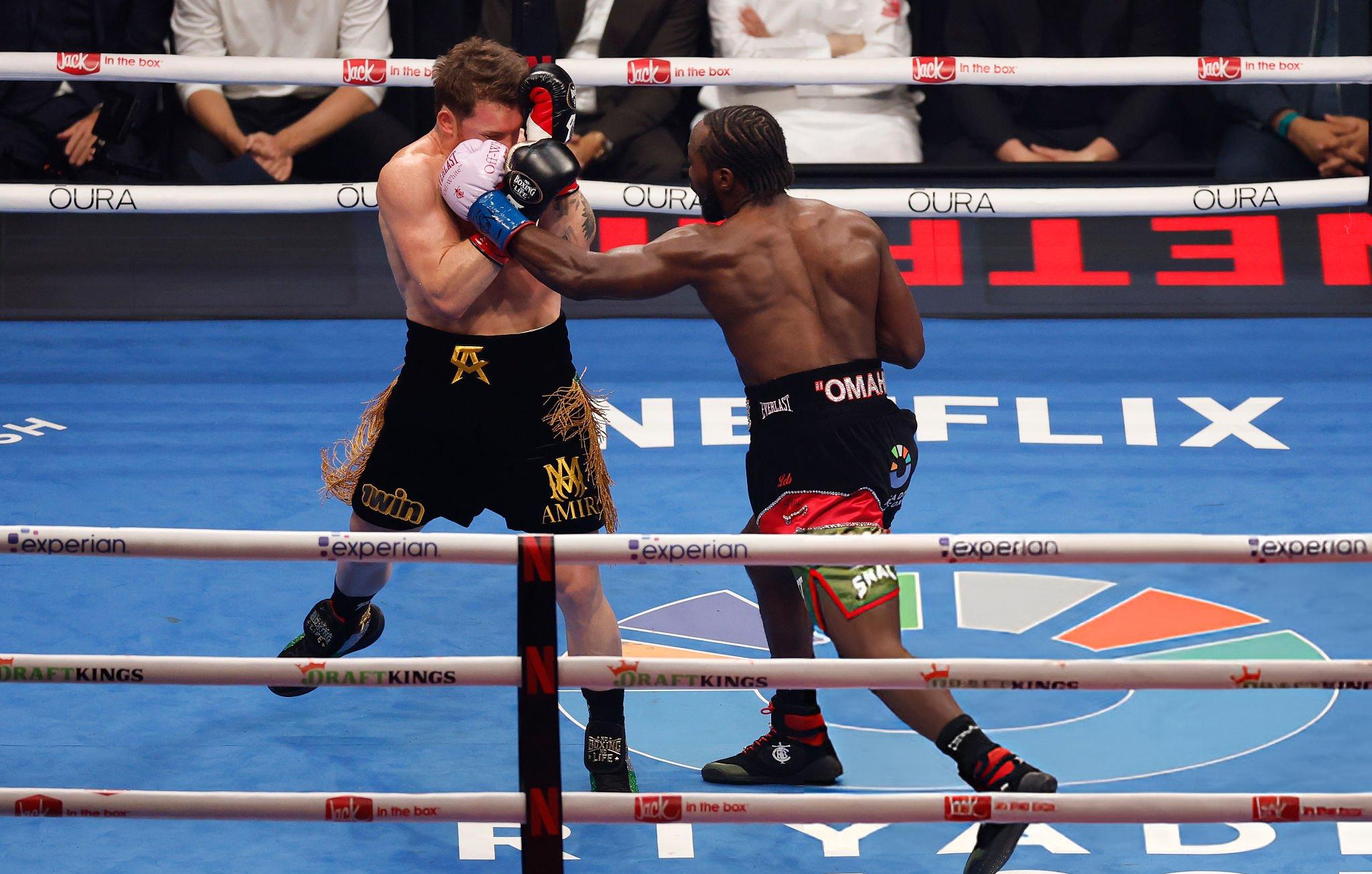
- Footwork as Navigation. Each time the route bent toward the ropes, Terence shortened the angle and stepped off the line of fire. Anthropometric perks (reach + height) helped, but they weren’t decisive; geometry was — not straight back but laterally, reclaiming space.
- The Jab — Canelo’s Brake. Frequent jab 'needles' not only measured range but also slowed Álvarez’s straight-line entries. Since he seldom masked his approaches with feints and upper-body rhythm, Crawford 'penalized' him and opened lanes for the right.
- No Fear of Exchanges. The Madrimov experience might have warranted caution, yet Crawford didn’t clamp up: he answered most attacks, never surrendering initiative outright. That breaks the psychology of pressure — the pursuer eats a counter before he can impose the exchange.
- Timing and Counter-Timing. A counterattack isn’t 'hit back', it’s 'hit the empty spot at the right moment'. Crawford’s clock ran true: he met and disrupted Canelo’s set-ups, leaving him in the 'weapon transition' phase.
Canelo’s Tactical Miscalculation: Short Entries Without Setup
Too often, Álvarez limited himself to singles and doubles without a 'cushion' of feints and foot fakes. Such entries are easier to answer than combinations and simpler to read. By the fourth round Canelo’s face was flushed, and by the ninth a hematoma blossomed under his right eye — the result of accumulated precision damage. The tiny scene at the start of the ninth is telling: the inside is usually Canelo’s sea, but this time he whiffed while Crawford set his forearms smartly, turned his torso, and replied clean.
Zonal Defense: Not a Static High Guard, but an Architecture
Instead of a monolithic 'wall', Terence broke defense into modules: the left hand shields the liver and body, the right protects cheek and temple; the chin tucks into the clavicle, the head makes a micro-slip, a step to the side — and counter. This 'modular' approach erased a large share of accentuated connects and left Canelo mostly with activity stats.
A Seamless Performance: When Even the Judges Don’t Need Convincing
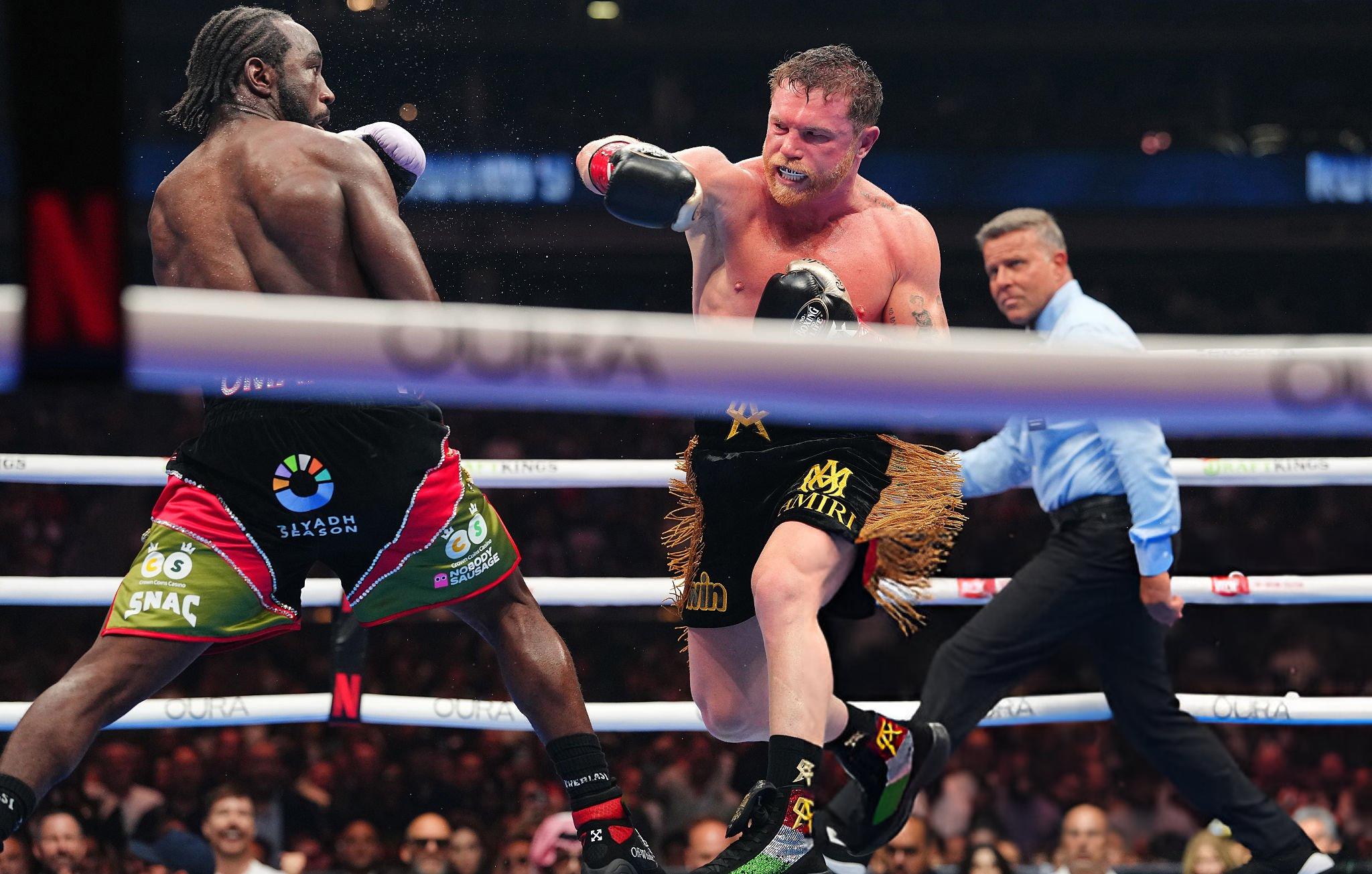
From mid-fight the pattern turned one-way: Crawford 'held' the tempo, dictated the distance, and stole the key episodes with round closers. He didn’t throw himself into risk, but he didn’t play antiseptic either — it was controlled, mature boxing with a tool for every sector.
Seventeen Years at the Top: What’s Already in the Bank
- Titles Across Five Weight Classes. The ladder stretches wider than most active stars; in scale it matches the best eras.
- Undisputed in Three Categories in the Four-Belt Era. A historical bar few have cleared in three divisions; a reference point is Henry Armstrong’s legendary run (1938).
- Weight Spread — About 15 kg. Nearly fifteen kilos between first and latest championship weights — rare flexibility for an elite boxer.
- Since 2014 — Only Title Fights. Twenty championship bouts in a row, most of them finished before the final bell.
- Stability in P4P. Since 2017, a permanent residence in The Ring’s pound-for-pound top three.
- Perfect Math. 42–0 — the brightest active zero; never a draw, never a controversial card in favor of a foe.
What Comes Next: Expand the Borders or Consolidate the Edge
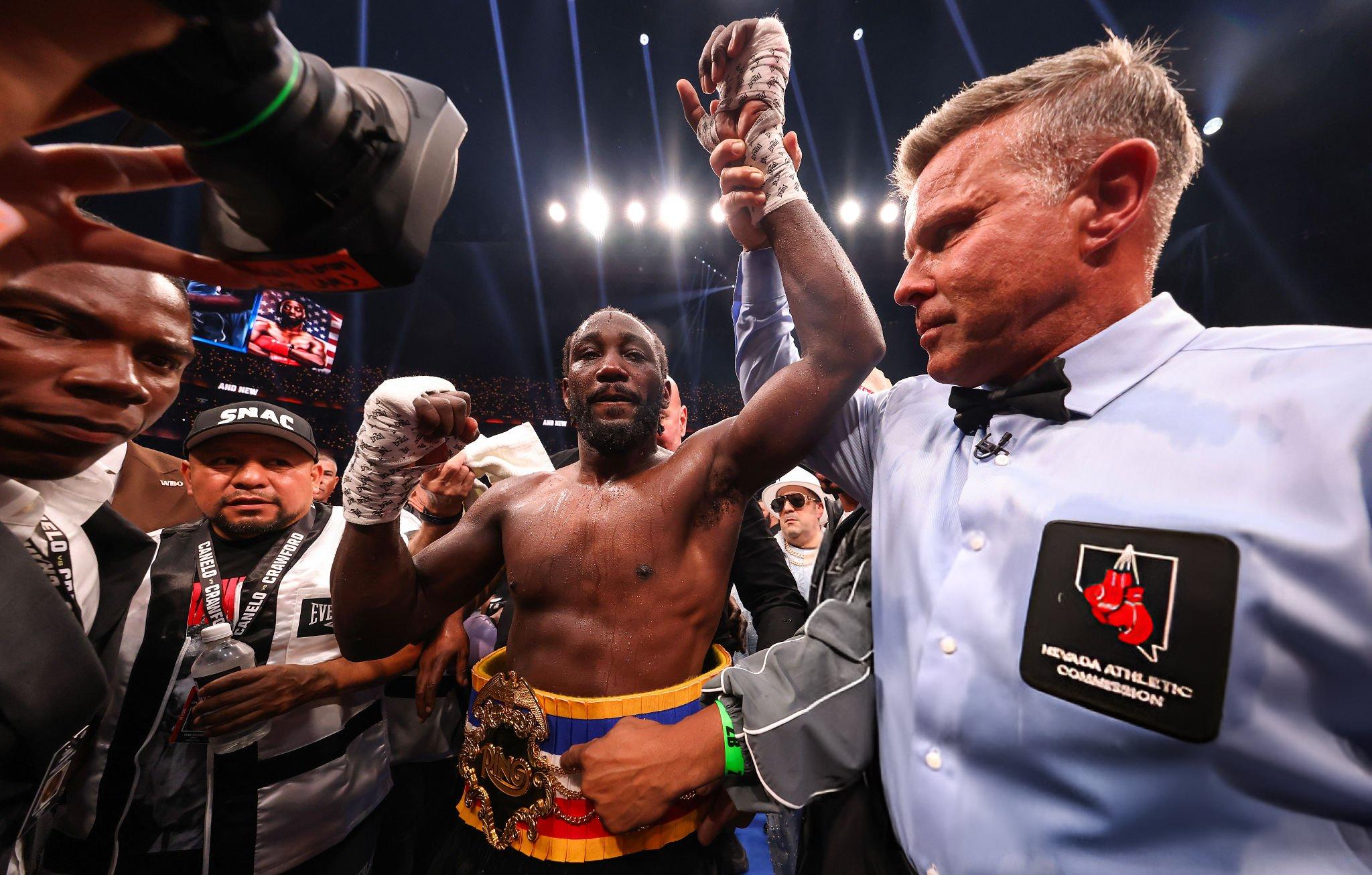
Formally, Crawford still has room to go down — to middleweight — where belts can be collected without running into 'monsters'. Another route is to stay at super middle and dictate terms to contenders who are bigger physically but poorer in tools. In both scenarios his starting position is strong: fight IQ, discipline, and versatility don’t depreciate with age as fast as speed or raw power.
The conclusion is simple yet striking: Crawford won not with power, but with order — order in his feet, in the jab, in the angles, in timing, and in his head. He took the most important thing from Canelo — the feeling of comfort — and left himself the evening’s only director. When boxing looks like this, admiration is not a figure of speech but a natural reaction.




